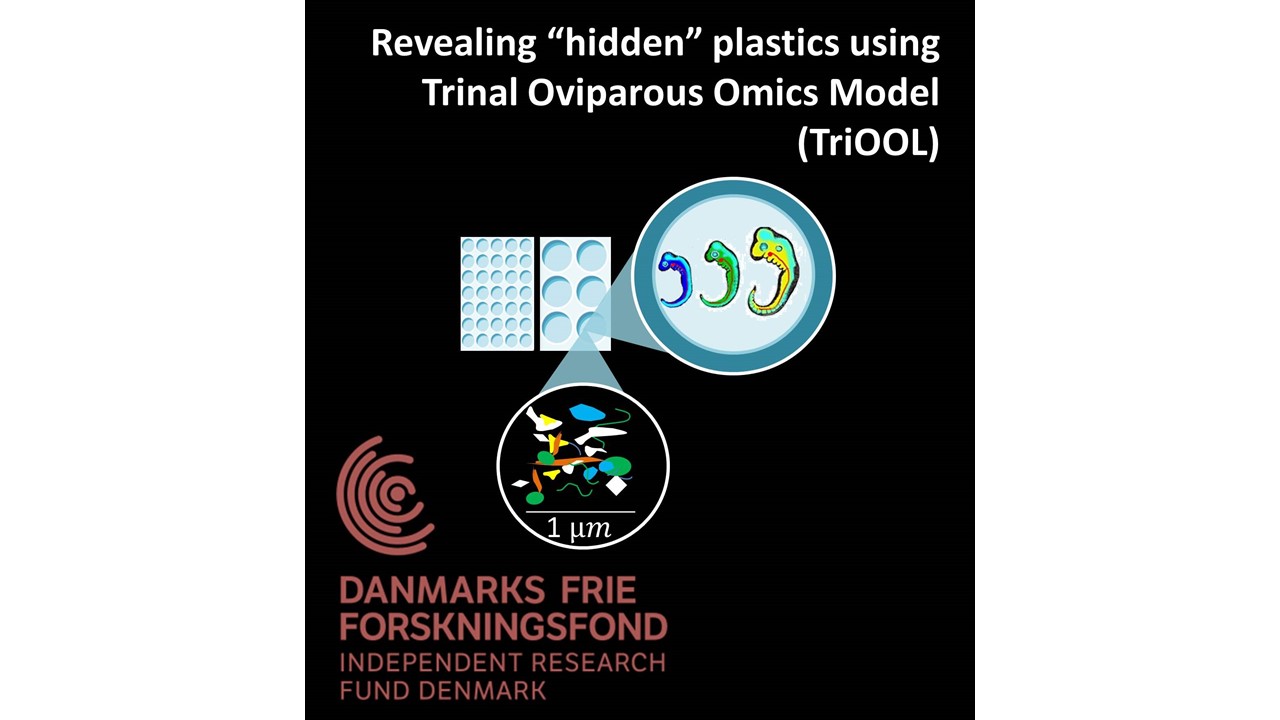What is the TriOOL project about?
What are the effects of nanoplastics on life? This question originates from human concern about their health and the environment. The emission and accumulation of nanoplastics are invisible but inevitable, however, we don’t know their actual impacts on wildlife and the environment. This project on Revealing “hidden” plastics using Trinal Oviparous Omics Model (TriOOL) builds on strong interdisciplinary technologies to explore frontiers of nanoplastic pollution issue, by integrating comparative model embryos, cutting-edge bioimaging, omics, and hazard modeling. The project will provide unprecedented insights into understanding the potential hazards posed by nanoplastics and corresponding mechanisms and launch a new chapter in toxicological assessment of nanopollutant mixtures.
Who are we?
The Sapere Aude Research Leader program is funded by the Independent Research Fund Denmark (DFF). The principal investigator Dr. Elvis Genbo Xu is Assistant Professor of Environmental Toxicology at Department of Biology of SDU. The project team includes top-level collaborators Associate Professor Henrik Holbech (SDU), Professor Gray Hardiman (UK), Professor Knut Erik Tollefsen (Norway), and Associate Professor Jonathan Brewer (SDU), as well as a world-class international advisory board: Professor Richard Thompson (UK), Professor Martin Grosell (USA), Professor Daniel Schlenk (USA), Professor Daoji Li (China), and Professor Xiangrong Xu (China).
What are the scientific challenges and perspectives in the project?
The ever-growing plastic production has caused the most prevalent pollutant. Once entering the natural environment, plastic products continuously fragments into small plastic particles that can spread in all ecosystems. Their small size and other unique properties make it a highly complex problem, e.g., high potential for cellular uptake and high heterogeneity. The fundamental knowledge of the cellular uptake, species-specific effects, and toxicity mechanisms are poorly understood, particularly in vertebrates. This project will develop a sensitive, reliable, and environmentally realistic approach to fill the critical knowledge gaps and generate new systematic data to advance the toxicological assessment of nanoplastics.
What is the estimated impact of this project?
The project will bring us a substantial step closer to understanding the state-of-the-art biological and environmental questions regarding nanoplastic, and provides a new solution to riddle the complex puzzle, applicable to other nanopollutants. It is highly timely to deal with global plastic problems. The novel knowledge and insight from this project will generate new scientific hypotheses, lay a methodological foundation for future research, and have profound implications on the emerging field of nanoplastic pollution. A deeper and more comprehensive understanding will eventually influence societal behavior and drive future management of plastic.
